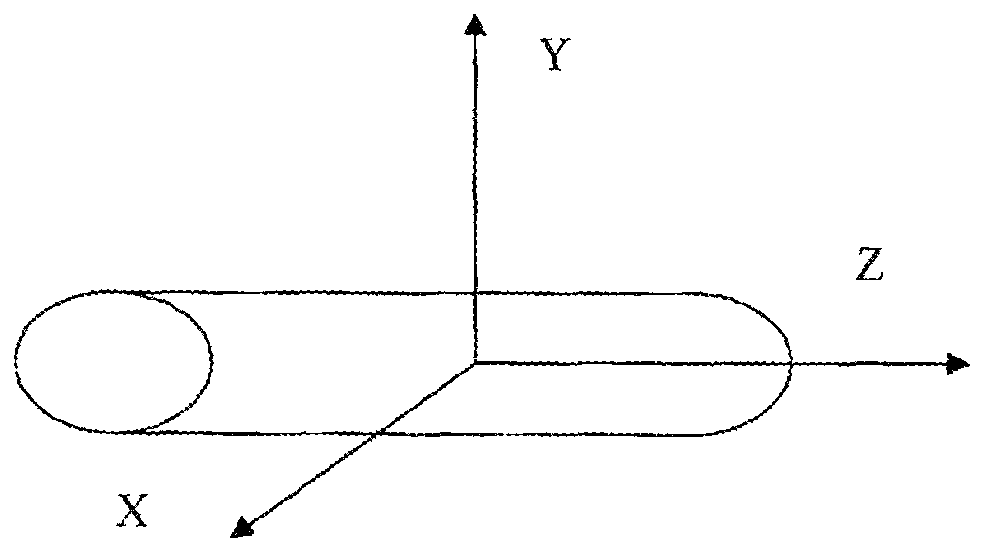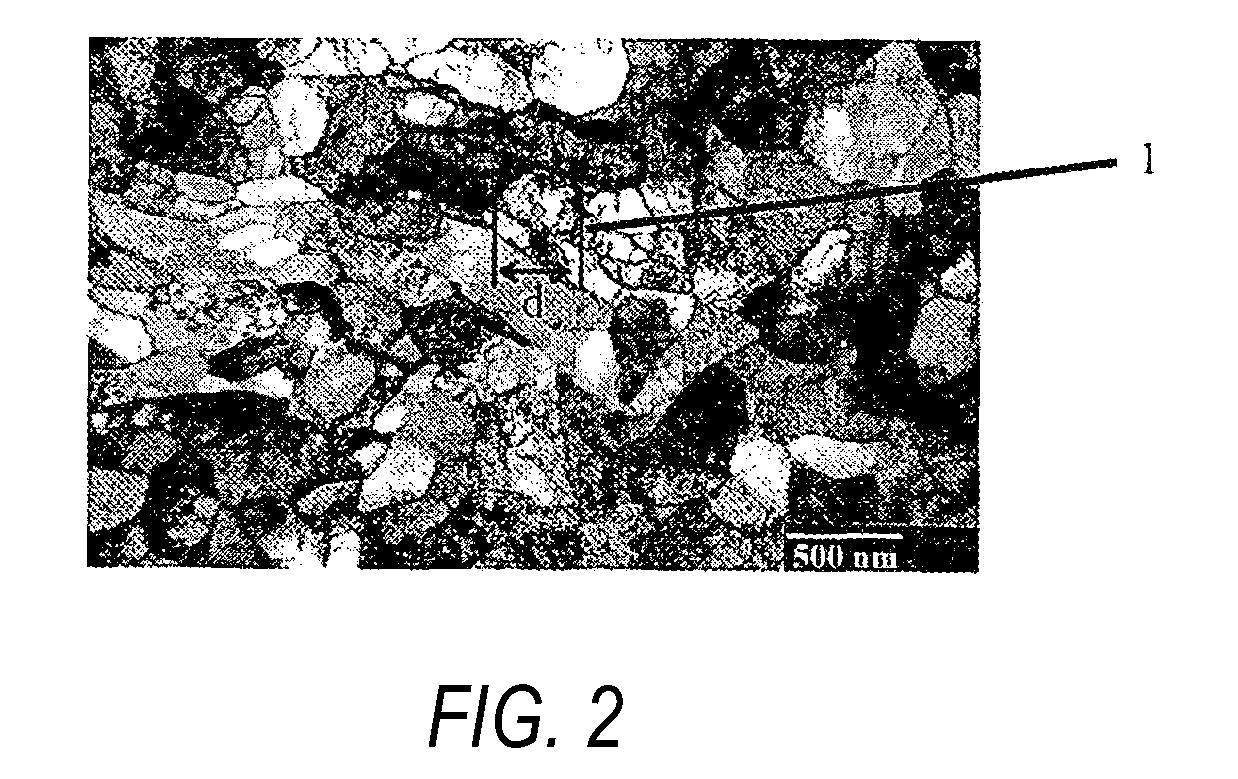Nanostructured commercially pure titanium for biomedicine and a method for producing a rod therefrom
a technology of nanostructured titanium and biomedicine, which is applied in the field of nanostructured materials, can solve the problems of toxic elements, vanadium and chromium accumulation, and the value of biocompatibility of high titanium alloys is considerably lower than that of commercially pure titanium, and achieves the enhancement of titanium strength, mechanical and fatigue properties, and strength. increase
- Summary
- Abstract
- Description
- Claims
- Application Information
AI Technical Summary
Benefits of technology
Problems solved by technology
Method used
Image
Examples
Embodiment Construction
[0027]A rod of commercially pure titanium is used as a billet. At the first stage of processing the billet is processed via equal-channel angular pressing (ECAP) at a temperature not over 450° C. in 4 passes to achieve the true accumulated strain e≧4 in a die set with the angle of channel intersection ψ=90°. After each pass, the billet is turned around its longitudinal axis clockwise by the angle of 90° in order to provide homogeneity in developing the structure. At this stage, the main refinement of the microstructure takes place in the bulk of the billet without changing its dimensions. At the initial stages of plastic deformation (e=1 after the first ECAP pass), the initial grains are fragmented as a result of generating deformation twins and cells with mostly low-angle dislocation boundaries. With the increase of the true accumulated strain to e=4 (after the 4th ECAP pass), new twins are generated in the structure, and in the course of that further grain fragmentation takes plac...
PUM
| Property | Measurement | Unit |
|---|---|---|
| size | aaaaa | aaaaa |
| temperature | aaaaa | aaaaa |
| angle | aaaaa | aaaaa |
Abstract
Description
Claims
Application Information
 Login to View More
Login to View More - R&D
- Intellectual Property
- Life Sciences
- Materials
- Tech Scout
- Unparalleled Data Quality
- Higher Quality Content
- 60% Fewer Hallucinations
Browse by: Latest US Patents, China's latest patents, Technical Efficacy Thesaurus, Application Domain, Technology Topic, Popular Technical Reports.
© 2025 PatSnap. All rights reserved.Legal|Privacy policy|Modern Slavery Act Transparency Statement|Sitemap|About US| Contact US: help@patsnap.com



